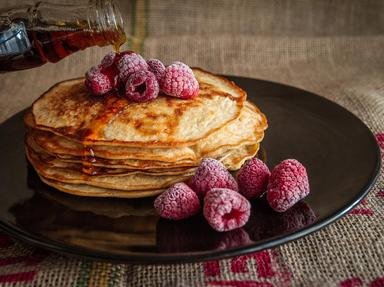Quiz Answer Key and Fun Facts
1. Popular in France (and elsewhere too), the pain au chocolat is, as you'd expect, a chocolate pastry. But where is the chocolate part of a pain au chocolat?
2. Muesli is one of those staple breakfast foods that was a relatively recent invention by most standards. What nationality was Maximilian Bircher-Benner, the man responsible for creating muesli in the first place?
3. Despite its significant popularity in the Americas, the humble bagel has its origins in which European country?
4. There's nothing like a bowl of porridge, though. Many variations on it exist (both sweet and savoury), so can you pick out which of these is NOT one of them?
5. If I offered you egg in the basket for breakfast, you could probably guess 50% of the main ingredients. What, generally speaking, constitutes the basket?
6. Batter up! I mean pancake batter. Pancakes can be consumed for breakfast all year round, though they see a particular rise in popularity on which day of the year?
7. A great way of using up leftover bread, French toast is made using which other main ingredient?
8. Eggs Benedict. Need I say more? Well, yes. A true Eggs Benedict will have the egg prepared in which of these ways?
9. A rather unusual breakfast item by this quiz's standards but nonetheless popular in both India and the UK, kedgeree traditionally contains what sort of fish?
10. The full English breakfast is possibly the king of the breakfasts. You'll find it in more or less the same form up and down the British Isles, but which of these is least likely to accompany your full English?
Source: Author
eburge
This quiz was reviewed by FunTrivia editor
WesleyCrusher before going online.
Any errors found in FunTrivia content are routinely corrected through our feedback system.


